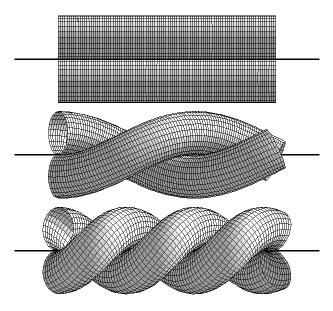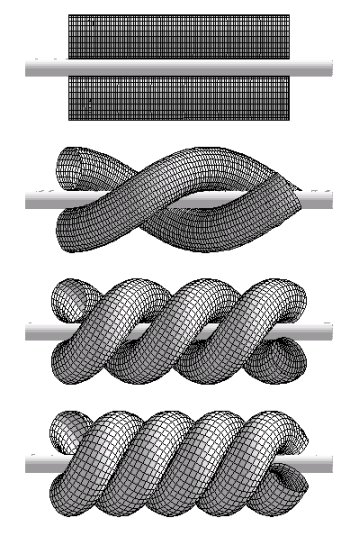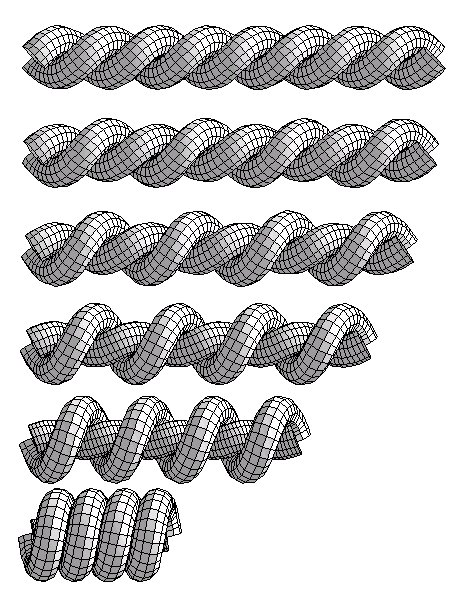
Take two straight pieces of
a perfect (perfectly flexible, but at the same time perfectly hard) rope
and put them side by side. Now, start twisting the pair aiming at producing
a periodic structure, which uses as little of the rope as possible per
period i.e. per 2 crossings.
The problem has been described
in [1]. Below we present essential results.

The pitch of the tight periodic structure created in such a manner P=Pi*D, where D is the diameter of the rope. Let Lp be the length of the tubes found within one period of the structure. As easy to find we have Lp/D=8.8858.

In this conformation the radii of the spirals defining axial curves running inside the twisted ropes are slightly larger than the radii of the ropes: R1=R2=0.5229D. As a result, a small hole appears in the twisted pair structure along its long axis. The pitch of the structure is smaller than Pi: P=2.6967 D. The tubes touch each other along two spiral curves running between the tubes. The length of the rope per period Lp/D=8.5013.

In this conformation the radii of the spirals defining axial curves running inside the twisted ropes are different, but their sum is equal D : R1=0.97326 D, R2=0.0267 D. Pitch of the structure is much smaller than previously: P=1.0136 D. The rope length per period Lp/D=7.2261. Note, that the value of R2 is limited by condition that the curvature of the inner spiral cannot be larger than 2/D.
Looking at the numbers cited above, one can immediately see the reasons for which during the tightening process the m-fold symmetry of the initial conformations of the T 2,m knots must be broken.
[1] S. Przybyl and P. Pieranski, In search of ideal knots III. Application of Maple V.4 to the problem of two ropes tightly twisted together, Pro Dialog, 6 , 18 (1998) (In Polish)